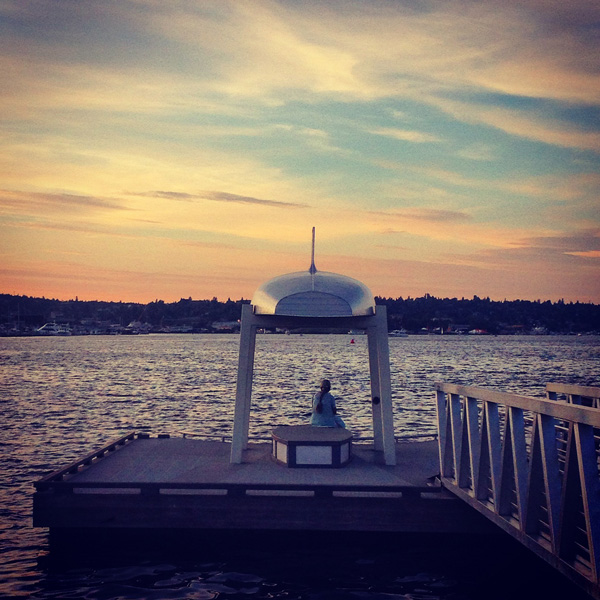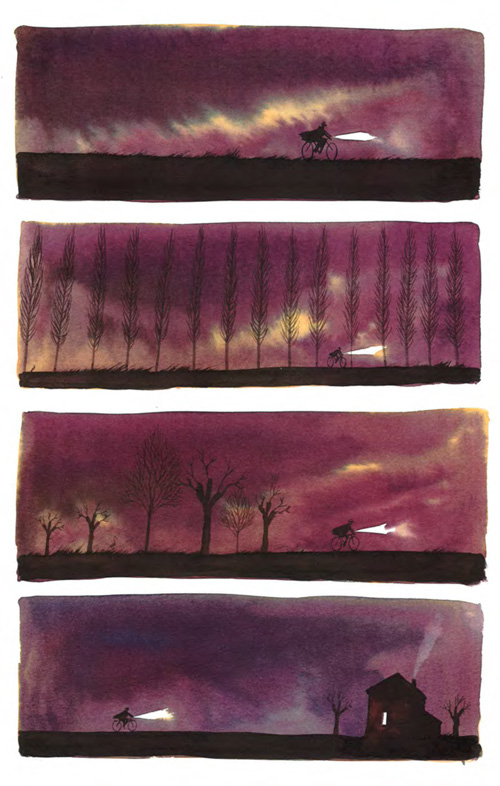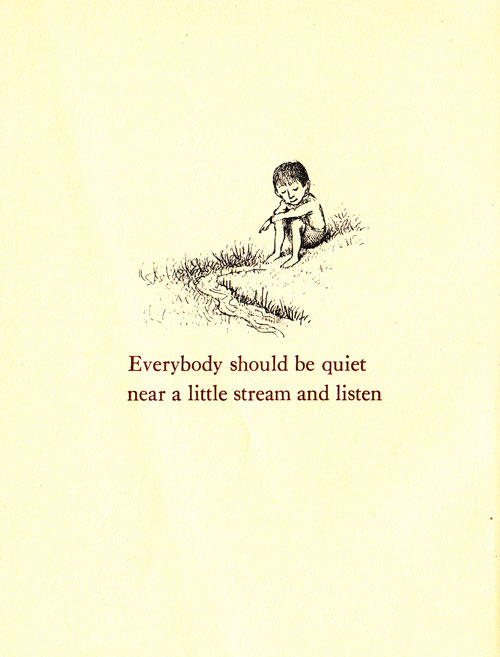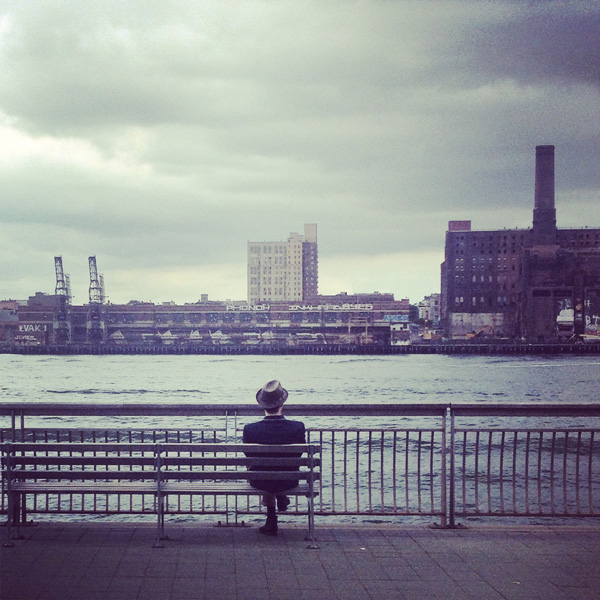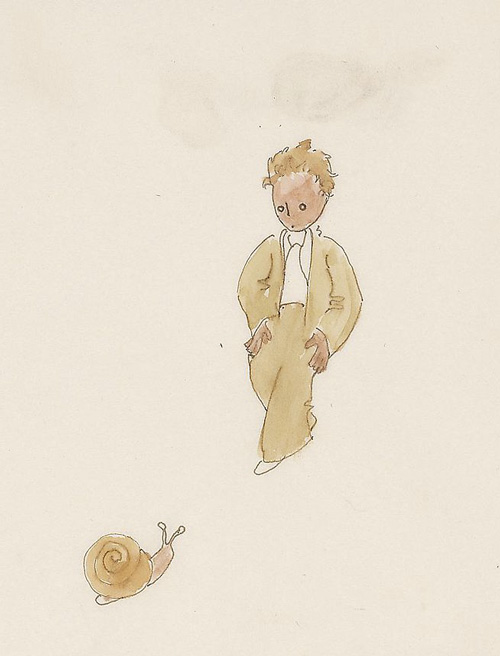How to Be Alone: An Antidote to One of the Central Anxieties and Greatest Paradoxes of Our Time
INSPIRATIONAL, 22 Sep 2014
Maria Popova, Brain Pickings – TRANSCEND Media Service
“We live in a society which sees high self-esteem as a proof of well-being, but we do not want to be intimate with this admirable and desirable person.”
If the odds of finding one’s soul mate are so dreadfully dismal and the secret of lasting love is largely a matter of concession, is it any wonder that a growing number of people choose to go solo? The choice of solitude, of active aloneness, has relevance not only to romance but to all human bonds — even Emerson, perhaps the most eloquent champion of friendship in the English language, lived a significant portion of his life in active solitude, the very state that enabled him to produce his enduring essays and journals. And yet that choice is one our culture treats with equal parts apprehension and contempt, particularly in our age of fetishistic connectivity. Hemingway’s famous assertion that solitude is essential for creative work is perhaps so oft-cited precisely because it is so radical and unnerving in its proposition.
A friend recently relayed an illustrative anecdote: One evening during a short retreat in Mexico by herself, she entered the local restaurant and asked to be seated. Upon realizing she was to dine alone, the waitstaff escorted her to the back with a blend of puzzlement and pity, so as not to dilute the resort’s carefully engineered illusory landscape of coupled bliss. (It’s worth noting that this unsettling incident, which is as much about the stigma of being single as about the profound failure to honor the art of being alone, is one women are still far more likely to confront than men; some live to tell about it.)
Solitude, the kind we elect ourselves, is met with judgement and enslaved by stigma. It is also a capacity absolutely essential for a full life.
That paradox is what British author Sara Maitland explores in How to Be Alone (public library) — the latest installment in The School of Life’s thoughtful crusade to reclaim the traditional self-help genre in a series of intelligent, non-self-helpy yet immeasurably helpful guides to such aspects of modern living as finding fulfilling work, cultivating a healthier relationship with sex, worrying less about money, and staying sane.
While Maitland lives in a region of Scotland with one of the lowest population densities in Europe, where the nearest supermarket is more than twenty miles away and there is no cell service (pause on that for a moment), she wasn’t always a loner — she grew up in a big, close-knit family as one of six children. It was only when she became transfixed by the notion of silence, the subject of her previous book, that she arrived, obliquely, at solitude. She writes:
I got fascinated by silence; by what happens to the human spirit, to identity and personality when the talking stops, when you press the off button, when you venture out into that enormous emptiness. I was interested in silence as a lost cultural phenomenon, as a thing of beauty and as a space that had been explored and used over and over again by different individuals, for different reasons and with wildly differing results. I began to use my own life as a sort of laboratory to test some ideas and to find out what it felt like. Almost to my surprise, I found I loved silence. It suited me. I got greedy for more. In my hunt for more silence, I found this valley and built a house here, on the ruins of an old shepherd’s cottage.
Maitland’s interest in solitude, however, is somewhat different from that in silence — while private in its origin, it springs from a public-facing concern about the need to address “a serious social and psychological problem around solitude,” a desire to “allay people’s fears and then help them actively enjoy time spent in solitude.” And so she does, posing the central, “slippery” question of this *predicament:
Being alone in our present society raises an important question about identity and well-being.
[…]
How have we arrived, in the relatively prosperous developed world, at least, at a cultural moment which values autonomy, personal freedom, fulfillment and human rights, and above all individualism, more highly than they have ever been valued before in human history, but at the same time these autonomous, free, self-fulfilling individuals are terrified of being alone with themselves?
[…]
We live in a society which sees high self-esteem as a proof of well-being, but we do not want to be intimate with this admirable and desirable person.
We see moral and social conventions as inhibitions on our personal freedoms, and yet we are frightened of anyone who goes away from the crowd and develops “eccentric” habits.
We believe that everyone has a singular personal “voice” and is, moreover, unquestionably creative, but we treat with dark suspicion (at best) anyone who uses one of the most clearly established methods of developing that creativity — solitude.
We think we are unique, special and deserving of happiness, but we are terrified of being alone.
[…]
We are supposed now to seek our own fulfillment, to act on our feelings, to achieve authenticity and personal happiness — but mysteriously not do it on our own.
Today, more than ever, the charge carries both moral judgement and weak logic.
Curiously, and importantly, mastering the art of solitude doesn’t make us more antisocial but, to the contrary, better able to connect. By being intimate with our own inner life — that frightening and often foreign landscape that philosopher Martha Nussbaum so eloquently urged us to explore despite our fear — frees us to reach greater, more dimensional intimacy with others. Maitland writes:
Nothing is more destructive of warm relations than the person who endlessly “doesn’t mind.” They do not seem to be a full individual if they have nothing of their own to “bring to the table,” so to speak. This suggests that even those who know that they are best and most fully themselves in relationships (of whatever kind) need a capacity to be alone, and probably at least some occasions to use that ability. If you know who you are and know that you are relating to others because you want to, rather than because you are trapped (unfree), in desperate need and greed, because you fear you will not exist without someone to affirm that fact, then you are free. Some solitude can in fact create better relationships, because they will be freer ones.
And yet the value of aloneness has descended into a downward spiral of social judgment over the course of humanity. Citing the rise of “male spinsters” in the U.S. census — men over forty who never married, up from 6% in 1980 to 16% today — Maitland traces the odd cultural distortion of the concept itself:
In the Middle Ages the word “spinster” was a compliment. A spinster was someone, usually a woman, who could spin well: a woman who could spin well was financially self-sufficient — it was one of the very few ways that mediaeval women could achieve economic independence. The word was generously applied to all women at the point of marriage as a way of saying they came into the relationship freely, from personal choice, not financial desperation. Now it is an insult, because we fear “for” such women — and now men as well — who are probably “sociopaths.”
This fairly modern attitude, which casts voluntary aloneness as a toxic trifecta of “sad, mad, and bad” — is reinforced via rather dogmatic circular logic that doesn’t afford those who choose solitude the basic dignity of their own choice. Reflecting on the prevalent response of pity — triggered by the “sad” portion of the dogma — Maitland plays out the exasperating impossibility of refuting such social assumptions:
If you say, “Well, no actually; I am very happy,” the denial is held to prove the case. Recently someone trying to condole with me in my misery said, when I assured them I was in fact happy, “You may think you are.” But happiness is a feeling. I do not think it — I feel it. I may, of course, be living in a fool’s paradise and the whole edifice of joy and contentment is going to crash around my ears sometime soon, but at the moment I am either lying or reporting the truth. My happiness cannot, by the very nature of happiness, be something I think I feel but don’t really feel. There is no possible response that does not descend almost immediately to the school-playground level of “Did, didn’t; did, didn’t.”
Underlying these attitudes, Maitland argues, is the central driver of fear — fear of those radically different from us, who make choices we don’t necessarily understand. This drives us, in turn, to project our fright onto others, often in the form of anger — a manifestation, at once sad, mad, and bad, of Anaïs Nin’s memorable observation that “it is a sign of great inner insecurity to be hostile to the unfamiliar.”
These persistently reinforced social fears, she notes, have chilling consequences:
If you tell people enough times that they are unhappy, incomplete, possibly insane and definitely selfish there is bound to come a grey morning when they wake up with the beginning of a nasty cold and wonder if they are lonely rather than simply “alone.”
(This crucial difference between aloneness and loneliness, in fact, is not only central to our psychological unease but also enacted even in our bodies — while solitude may be essential for creativity and key to the mythology of genius, loneliness, scientists have found, has deadly physical consequences on our risk for everything from heart disease to dementia.)
Paradoxically, Maitland points out, many of our most celebrated cultural icons had solitude embedded in their lifestyle and spirit, from great explorers and adventurers to famous “geniuses.” She cites the great silent film actor Greta Garbo, a famous loner, as a particularly poignant example:
Garbo introduced a subtlety of expression to the art of silent acting and that its effect on audiences cannot be exaggerated… In retirement she adopted a lifestyle of both simplicity and leisure, sometimes just ‘drifting’. But she always had close friends with whom she socialized and travelled. She did not marry but did have serious love affairs with both men and women. She collected art. She walked, alone and with companions, especially in New York. She was a skillful paparazzi-avoider. Since she chose to retire, and for the rest of her life consistently declined opportunities to make further films, it is reasonable to suppose that she was content with that choice.
It is in fact evident that a great many people, for many different reasons, throughout history and across cultures, have sought out solitude to the extent that Garbo did, and after experiencing that lifestyle for a while continue to uphold their choices, even when they have perfectly good opportunities to live more social lives.
So how did our present attitudes toward solitude emerge? Maitland argues that our lamentable refusal to afford those who choose aloneness “the normal tolerance of difference on which we pride ourselves elsewhere” is the result of a “very deep cultural confusion”:
For two millennia, at least, we have been trying to live with two radically contrasting and opposed models of what the good life would or should be. Culturally, there is a slightly slick tendency to blame all our woes, and especially our social difficulties, either on a crude social Darwinism or on an ill-defined package called the “Judaeo-Christian paradigm” or “tradition.” Apparently this is why, among other things, we have so much difficulty with sex (both other people’s and our own); why women remain unequal; why we are committed to world domination and ecological destruction; and why we are not as perfectly happy as we deserve. I, for one, do not believe this — but I do believe that we suffer from trying to hold together the values of Judaeo-Christianity (inasmuch as we understand them) and the values of classical civilization, and they really do not fit.
She traces the evolution of that confusion all the way back to the Roman Empire, with its ideals of public and social life. Even the word “civilization” bespeaks these values — it comes from civis, Latin for “citizen.” (Though it warrants noting that one of the greatest and most enduring Roman exports issued the memorable admonition that “all those who call you to themselves draw you away from yourself.”) Still, the Romans were notorious for their lust for power, honor, and glory — ideals invariably social in nature and crucial to the political cohesion of society when confronted with the barbarians at the gate. Maitland writes:
In these circumstances solitude is threatening — without a common and embedded religious faith to give shared meaning to the choice, being alone is a challenge to the security of those clinging desperately to a sinking raft. People who pull out and “go solo” are exposing the danger while apparently escaping the engagement.
Maitland fast-forwards to our present predicament, the product of millennia of cultural baggage:
No wonder we are frightened of those who desire and aspire to be alone, if only a little more than has been acceptable in recent social forms. No wonder we want to establish solitude as “sad, mad and bad” — consciously or unconsciously, those of us who want to do something so markedly countercultural are exposing, and even widening, the rift lines.
But the truth is, the present paradigm is not really working. Despite the intense care and attention lavished on the individual ego; despite over a century of trying to “raise self-esteem” in the peculiar belief that it will simultaneously enhance individuality and create good citizens; despite valiant attempts to consolidate relationships and lower inhibitions; despite intimidating efforts to dragoon the more independent-minded and creative to become “team players”; despite the promises of personal freedom made to us by neoliberalism and the cult of individualism and rights — despite all this, the well seems to be running dry. We are living in a society marked by unhappy children, alienated youth, politically disengaged adults, stultifying consumerism, escalating inequality, deeply scary wobbles in the whole economic system, soaring rates of mental ill-health and a planet so damaged that we may well end up destroying the whole enterprise.
Of course we also live in a world of great beauty, sacrificial and passionate love, tenderness, prosperity, courage and joy. But quite a lot of all that seems to happen regardless of the paradigm and the high thoughts of philosophy. It has always happened. It is precisely because it has always happened that we go on wrestling with these issues in the hope that it can happen more often and for more people.
And wrestle we do, often trying to grasp and cling our way out of solitude — a state we don’t fully understand and can’t fully inhabit to reap its rewards. Our two most common tactics for shielding against solitude, Maitland notes, are the offensive fear-and-projection strategy, where we criticize those capable of finding joy in solitude and condemn them to the sad-mad-bad paradigm, and the defensive approach, where we attempt to insulate ourselves from the risk of aloneness by obsessively accumulating a vast network of social ties as a kind of “insurance policy.” In one of her most quietly poignant asides, Maitland whispers:
There is no number of friends on Facebook, contacts, connections or financial provision that can guarantee to protect us.
Our cultural ambivalence is also manifested in our chronic bias for extraversion despite growing evidence for the power of introverts. Maitland writes:
At the same time as pursuing this “extrovert ideal,” society gives out an opposite — though more subterranean — message. Most people would still rather be described as sensitive, spiritual, reflective, having rich inner lives and being good listeners than the more extroverted opposites. I think we still admire the life of the intellectual over that of the salesman; of the composer over the performer (which is why pop stars constantly stress that they write their own songs); of the craftsman over the politician; of the solo adventurer over the package tourist… But the kind of unexamined but mixed messages that society offers us in relation to being alone add to the confusion; and confusion strengthens fear.
Among Maitland’s toolkit of “ideas for overturning negative views of solitude and developing a positive sense of aloneness and a true capacity to enjoy it” are the exploration of reverie and the practice of facing the fear. She enumerates the five basic categories of rewards to be reaped from unlearning our culturally conditioned fear of aloneness and learning how to “do” solitude well:
- A deeper consciousness of oneself
- A deeper attunement to nature
- A deeper relationship with the transcendent (the numinous, the divine, the spiritual)
- Increased creativity
- An increased sense of freedom
In the remainder of How to Be Alone, Maitland goes on to offer a series of “exercises” along each of these five directions of aspiration — psychological strategies for retuning our relationship with solitude.
_______________________________
Brain Pickings is the brain child of Maria Popova, an interestingness hunter-gatherer and curious mind at large obsessed with combinatorial creativity who also writes for Wired UK and The Atlantic, among others, and is an MIT Futures of Entertainment Fellow. She has gotten occasional help from a handful of guest contributors.
Go to Original – brainpickings.org
DISCLAIMER: The statements, views and opinions expressed in pieces republished here are solely those of the authors and do not necessarily represent those of TMS. In accordance with title 17 U.S.C. section 107, this material is distributed without profit to those who have expressed a prior interest in receiving the included information for research and educational purposes. TMS has no affiliation whatsoever with the originator of this article nor is TMS endorsed or sponsored by the originator. “GO TO ORIGINAL” links are provided as a convenience to our readers and allow for verification of authenticity. However, as originating pages are often updated by their originating host sites, the versions posted may not match the versions our readers view when clicking the “GO TO ORIGINAL” links. This site contains copyrighted material the use of which has not always been specifically authorized by the copyright owner. We are making such material available in our efforts to advance understanding of environmental, political, human rights, economic, democracy, scientific, and social justice issues, etc. We believe this constitutes a ‘fair use’ of any such copyrighted material as provided for in section 107 of the US Copyright Law. In accordance with Title 17 U.S.C. Section 107, the material on this site is distributed without profit to those who have expressed a prior interest in receiving the included information for research and educational purposes. For more information go to: http://www.law.cornell.edu/uscode/17/107.shtml. If you wish to use copyrighted material from this site for purposes of your own that go beyond ‘fair use’, you must obtain permission from the copyright owner.
